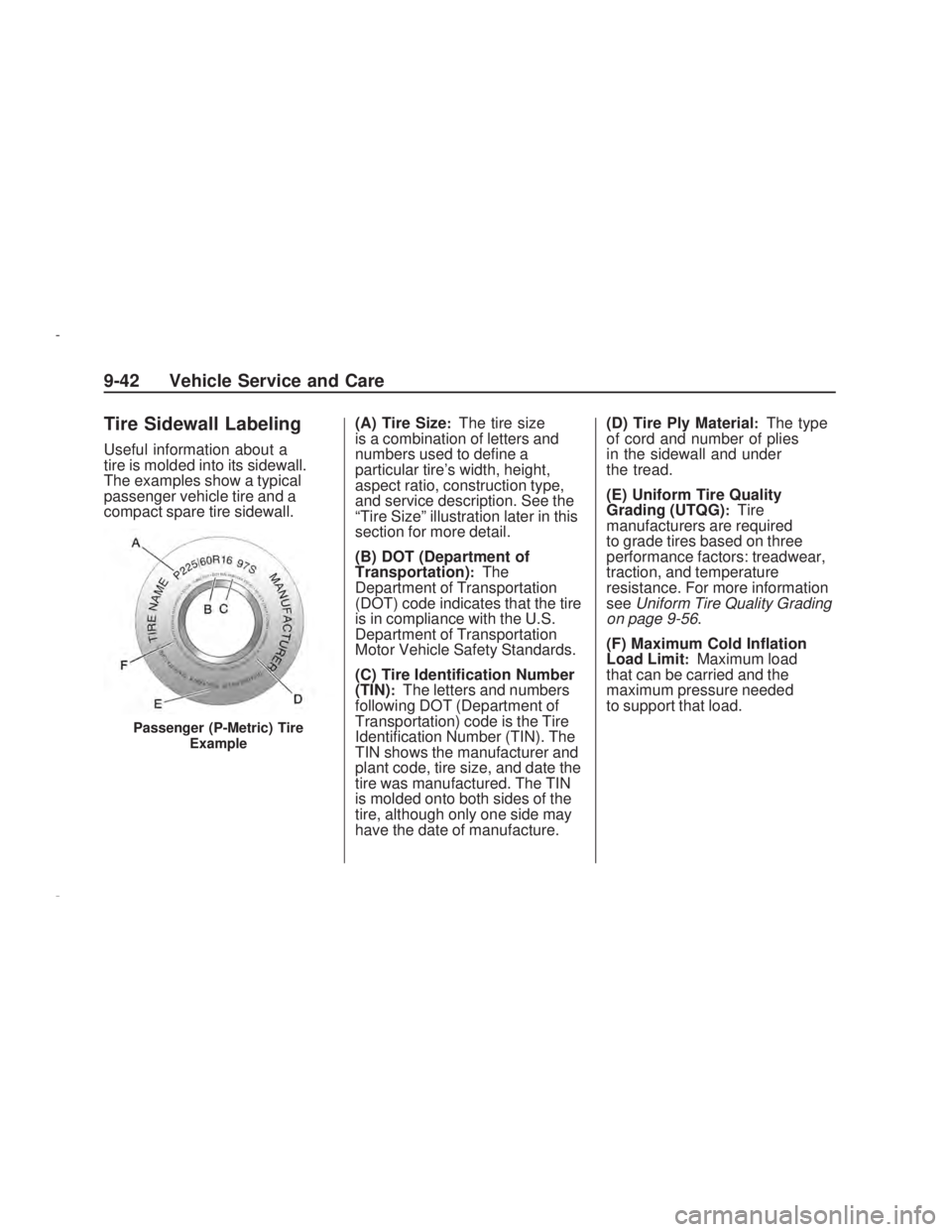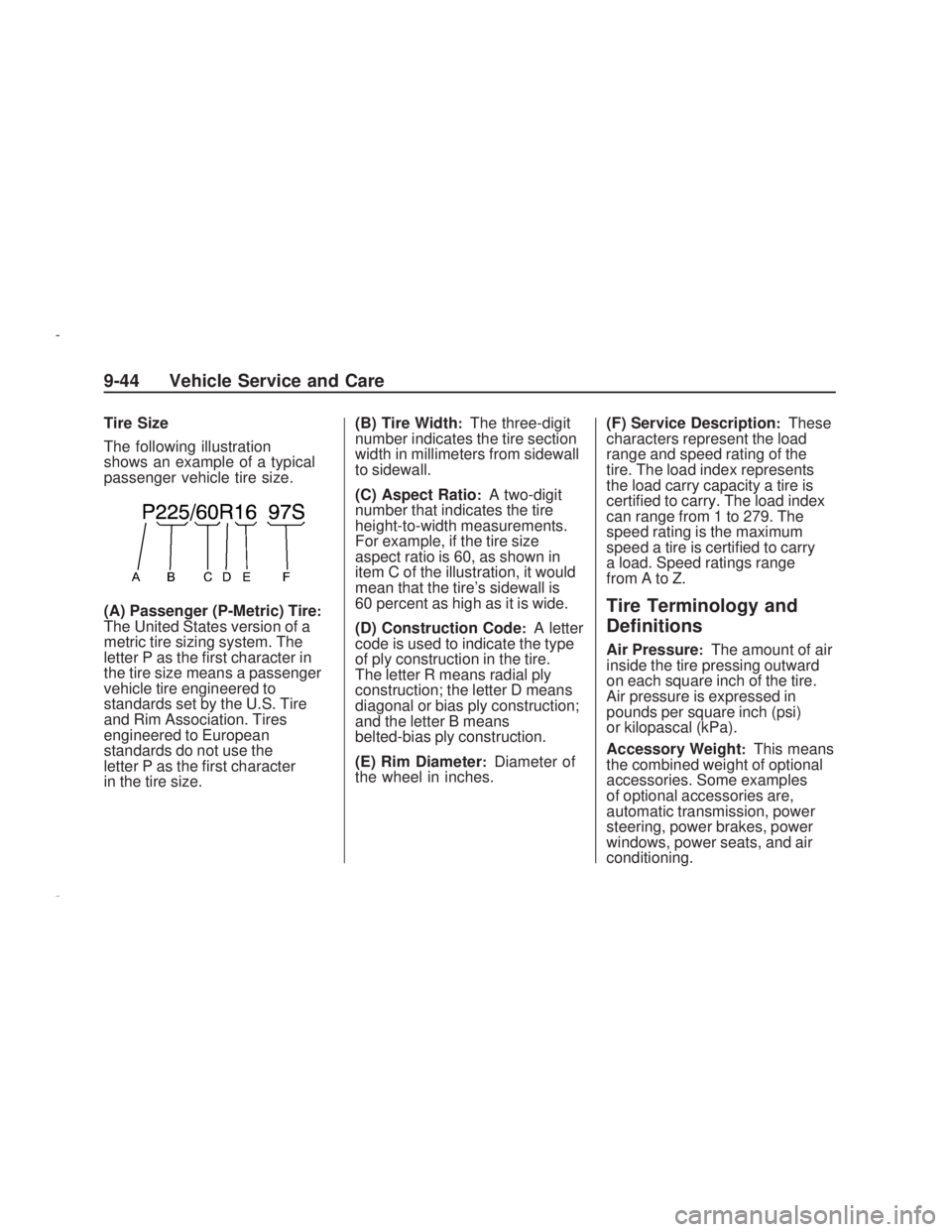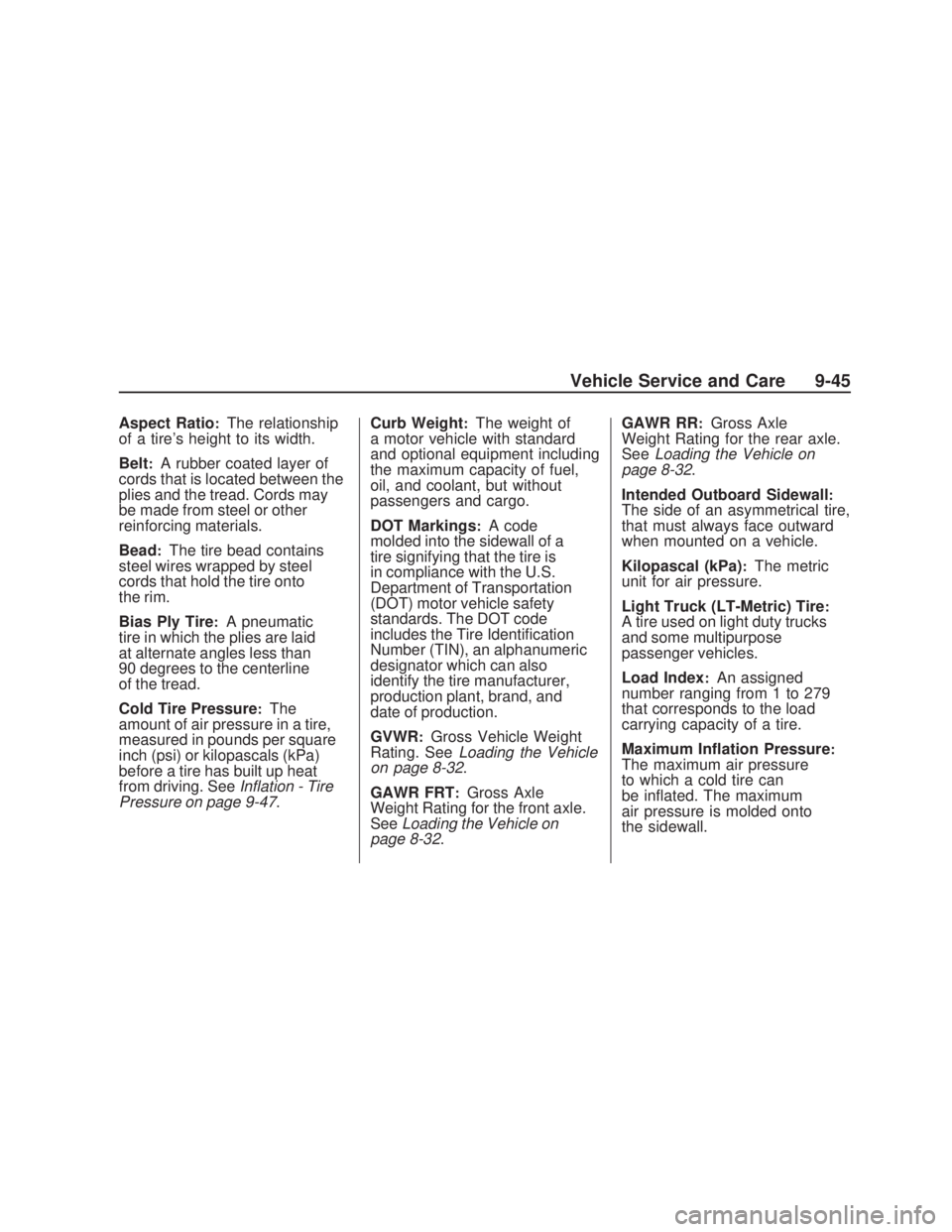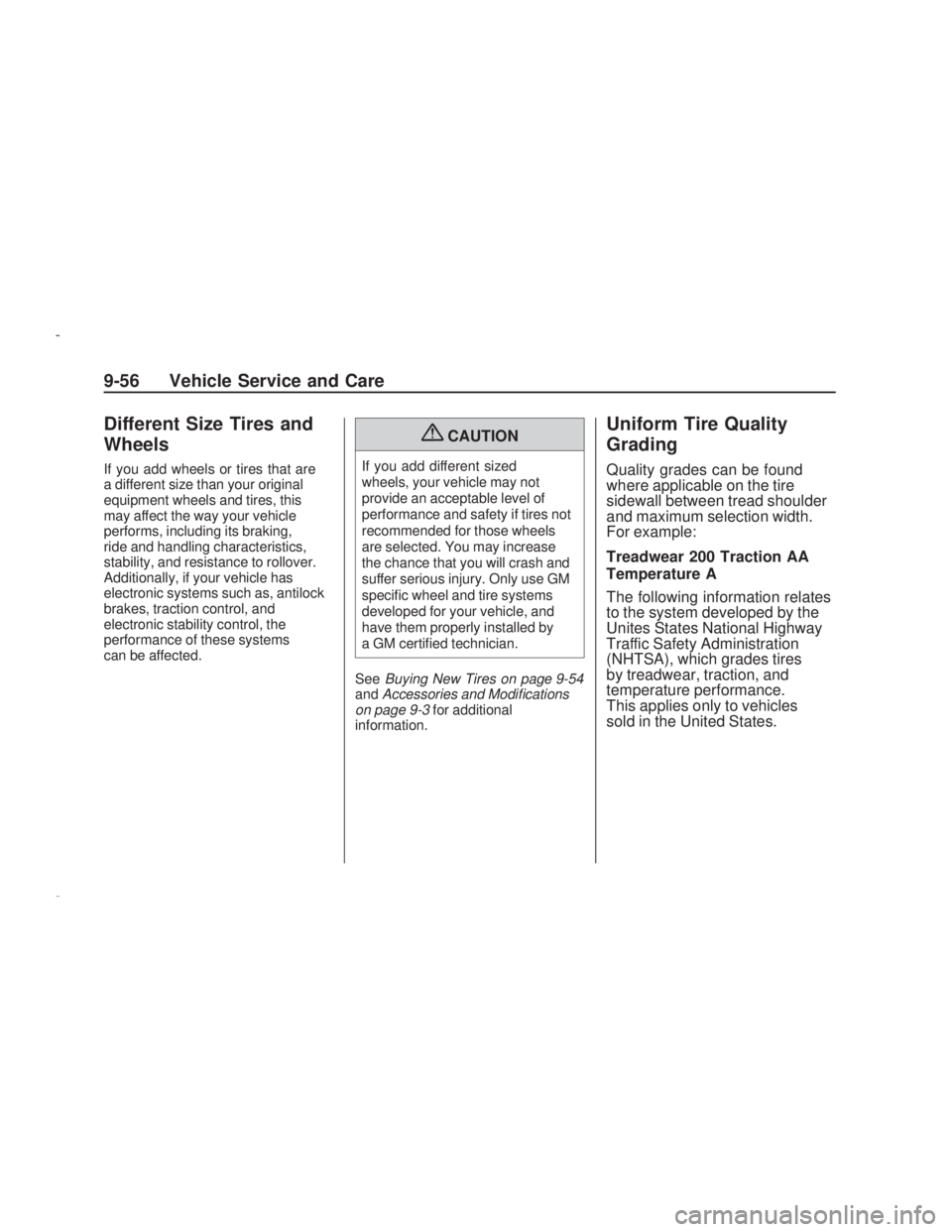width PONTIAC VIBE 2009 Owners Manual
[x] Cancel search | Manufacturer: PONTIAC, Model Year: 2009, Model line: VIBE, Model: PONTIAC VIBE 2009Pages: 318, PDF Size: 1.53 MB
Page 20 of 318

Q:What is wrong with this?
A:The belt is twisted across
the body.
{CAUTION
You can be seriously injured by a
twisted belt. In a crash, you would
not have the full width of the belt
to spread impact forces. If a belt
is twisted, make it straight so it
can work properly, or ask your
dealer/retailer to �x it.
Lap-Shoulder Belt
All seating positions in the vehicle
have a lap-shoulder belt.
The following instructions explain
how to wear a lap-shoulder belt
properly.
1. Adjust the seat so you can sit up
straight. To see how, see “Seats”
in the Index.
2. Pick up the latch plate and pull
the belt across you. Do not let
it get twisted.The lap-shoulder belt may lock
if you pull the belt across
you very quickly. If this happens,
let the belt go back slightly to
unlock it. Then pull the belt
across you more slowly.
If the shoulder portion of a
passenger belt is pulled out all
the way, the child restraint
locking feature may be engaged.
If this happens, let the belt go
back all the way and start again.
1-16 Seats and Restraints
2009 - Pontiac Vibe Owner Manual
Page 214 of 318

Tire Sidewall Labeling
Useful information about a
tire is molded into its sidewall.
The examples show a typical
passenger vehicle tire and a
compact spare tire sidewall.(A) Tire Size
:The tire size
is a combination of letters and
numbers used to de�ne a
particular tire’s width, height,
aspect ratio, construction type,
and service description. See the
“Tire Size” illustration later in this
section for more detail.
(B) DOT (Department of
Transportation)
:The
Department of Transportation
(DOT) code indicates that the tire
is in compliance with the U.S.
Department of Transportation
Motor Vehicle Safety Standards.
(C) Tire Identi�cation Number
(TIN)
:The letters and numbers
following DOT (Department of
Transportation) code is the Tire
Identi�cation Number (TIN). The
TIN shows the manufacturer and
plant code, tire size, and date the
tire was manufactured. The TIN
is molded onto both sides of the
tire, although only one side may
have the date of manufacture.(D) Tire Ply Material
:The type
of cord and number of plies
in the sidewall and under
the tread.
(E) Uniform Tire Quality
Grading (UTQG)
:Tire
manufacturers are required
to grade tires based on three
performance factors: treadwear,
traction, and temperature
resistance. For more information
seeUniform Tire Quality Grading
on page 9-56.
(F) Maximum Cold In�ation
Load Limit
:Maximum load
that can be carried and the
maximum pressure needed
to support that load.
Passenger (P-Metric) Tire
Example
9-42 Vehicle Service and Care
2009 - Pontiac Vibe Owner Manual
Page 215 of 318

(A) Temporary Use Only:The
compact spare tire or temporary
use tire has a tread life of
approximately 3,000 miles
(5 000 km) and should not be
driven at speeds over 65 mph
(105 km/h). The compact spare
tire is for emergency use when a
regular road tire has lost air and
gone �at. If your vehicle has a
compact spare tire. SeeCompact
Spare Tire on page 9-70andIf a
Tire Goes Flat on page 9-61.(B) Tire Ply Material
:The type
of cord and number of plies
in the sidewall and under
the tread.
(C) Tire Identi�cation Number
(TIN)
:The letters and numbers
following the DOT (Department
of Transportation) code is the
Tire Identi�cation Number (TIN).
The TIN shows the manufacturer
and plant code, tire size, and
date the tire was manufactured.
The TIN is molded onto both
sides of the tire, although only
one side may have the date of
manufacture.
(D) Maximum Cold In�ation
Load Limit
:Maximum load that
can be carried and the maximum
pressure needed to support
that load.(E) Tire In�ation
:The
temporary use tire or compact
spare tire should be in�ated
to 60 psi (420 kPa). For more
information on tire pressure and
in�ation seeInflation - Tire
Pressure on page 9-47.
(F) Tire Size
:A combination
of letters and numbers de�ne a
tire’s width, height, aspect ratio,
construction type, and service
description. The letter T as the
�rst character in the tire size
means the tire is for temporary
use only.
Compact Spare Tire Example
Vehicle Service and Care 9-43
2009 - Pontiac Vibe Owner Manual
Page 216 of 318

Tire Size
The following illustration
shows an example of a typical
passenger vehicle tire size.
(A) Passenger (P-Metric) Tire
:The United States version of a
metric tire sizing system. The
letter P as the �rst character in
the tire size means a passenger
vehicle tire engineered to
standards set by the U.S. Tire
and Rim Association. Tires
engineered to European
standards do not use the
letter P as the �rst character
in the tire size.(B) Tire Width
:The three-digit
number indicates the tire section
width in millimeters from sidewall
to sidewall.
(C) Aspect Ratio
:A two-digit
number that indicates the tire
height-to-width measurements.
For example, if the tire size
aspect ratio is 60, as shown in
item C of the illustration, it would
mean that the tire’s sidewall is
60 percent as high as it is wide.
(D) Construction Code
:A letter
code is used to indicate the type
of ply construction in the tire.
The letter R means radial ply
construction; the letter D means
diagonal or bias ply construction;
and the letter B means
belted-bias ply construction.
(E) Rim Diameter
:Diameter of
the wheel in inches.(F) Service Description
:These
characters represent the load
range and speed rating of the
tire. The load index represents
the load carry capacity a tire is
certi�ed to carry. The load index
can range from 1 to 279. The
speed rating is the maximum
speed a tire is certi�ed to carry
a load. Speed ratings range
fromAtoZ.
Tire Terminology and
De�nitions
Air Pressure:The amount of air
inside the tire pressing outward
on each square inch of the tire.
Air pressure is expressed in
pounds per square inch (psi)
or kilopascal (kPa).
Accessory Weight
:This means
the combined weight of optional
accessories. Some examples
of optional accessories are,
automatic transmission, power
steering, power brakes, power
windows, power seats, and air
conditioning.
9-44 Vehicle Service and Care
2009 - Pontiac Vibe Owner Manual
Page 217 of 318

Aspect Ratio:The relationship
of a tire’s height to its width.
Belt
:A rubber coated layer of
cords that is located between the
plies and the tread. Cords may
be made from steel or other
reinforcing materials.
Bead
:The tire bead contains
steel wires wrapped by steel
cords that hold the tire onto
the rim.
Bias Ply Tire
:A pneumatic
tire in which the plies are laid
at alternate angles less than
90 degrees to the centerline
of the tread.
Cold Tire Pressure
:The
amount of air pressure in a tire,
measured in pounds per square
inch (psi) or kilopascals (kPa)
before a tire has built up heat
from driving. SeeInflation - Tire
Pressure on page 9-47.Curb Weight
:The weight of
a motor vehicle with standard
and optional equipment including
the maximum capacity of fuel,
oil, and coolant, but without
passengers and cargo.
DOT Markings
:A code
molded into the sidewall of a
tire signifying that the tire is
in compliance with the U.S.
Department of Transportation
(DOT) motor vehicle safety
standards. The DOT code
includes the Tire Identi�cation
Number (TIN), an alphanumeric
designator which can also
identify the tire manufacturer,
production plant, brand, and
date of production.
GVWR
:Gross Vehicle Weight
Rating. SeeLoading the Vehicle
on page 8-32.
GAWR FRT
:Gross Axle
Weight Rating for the front axle.
SeeLoading the Vehicle on
page 8-32.GAWR RR
:Gross Axle
Weight Rating for the rear axle.
SeeLoading the Vehicle on
page 8-32.
Intended Outboard Sidewall
:The side of an asymmetrical tire,
that must always face outward
when mounted on a vehicle.
Kilopascal (kPa)
:The metric
unit for air pressure.
Light Truck (LT-Metric) Tire
:A tire used on light duty trucks
and some multipurpose
passenger vehicles.
Load Index
:An assigned
number ranging from 1 to 279
that corresponds to the load
carrying capacity of a tire.
Maximum In�ation Pressure
:The maximum air pressure
to which a cold tire can
be in�ated. The maximum
air pressure is molded onto
the sidewall.
Vehicle Service and Care 9-45
2009 - Pontiac Vibe Owner Manual
Page 228 of 318

Different Size Tires and
Wheels
If you add wheels or tires that are
a different size than your original
equipment wheels and tires, this
may affect the way your vehicle
performs, including its braking,
ride and handling characteristics,
stability, and resistance to rollover.
Additionally, if your vehicle has
electronic systems such as, antilock
brakes, traction control, and
electronic stability control, the
performance of these systems
can be affected.
{CAUTION
If you add different sized
wheels, your vehicle may not
provide an acceptable level of
performance and safety if tires not
recommended for those wheels
are selected. You may increase
the chance that you will crash and
suffer serious injury. Only use GM
speci�c wheel and tire systems
developed for your vehicle, and
have them properly installed by
a GM certi�ed technician.
SeeBuying New Tires on page 9-54
andAccessories and Modifications
on page 9-3for additional
information.
Uniform Tire Quality
Grading
Quality grades can be found
where applicable on the tire
sidewall between tread shoulder
and maximum selection width.
For example:
Treadwear 200 Traction AA
Temperature A
The following information relates
to the system developed by the
Unites States National Highway
Traffic Safety Administration
(NHTSA), which grades tires
by treadwear, traction, and
temperature performance.
This applies only to vehicles
sold in the United States.
9-56 Vehicle Service and Care
2009 - Pontiac Vibe Owner Manual
Page 231 of 318

Wheel Replacement
Replace any wheel that is bent,
cracked or badly rusted or corroded.
If wheel nuts keep coming loose,
the wheel, wheel bolts and wheel
nuts should be replaced. If the
wheel leaks air, replace it (except
some aluminum wheels, which can
sometimes be repaired). See your
dealer/retailer if any of these
conditions exist.
Your dealer/retailer will know the
kind of wheel you need.
Each new wheel should have
the same load-carrying capacity,
diameter, width, offset and be
mounted the same way as the
one it replaces.If you need to replace any of the
wheels, wheel bolts or wheel
nuts, replace them only with new
GM original equipment parts.
This way, you will be sure to have
the right wheel, wheel bolts and
wheel nuts for the vehicle.
{CAUTION
Using the wrong replacement
wheels, wheel bolts, or wheel
nuts on your vehicle can be
dangerous. It could affect the
braking and handling of your
vehicle, make your tires lose
air and make you lose control.
You could have a collision in
which you or others could be
injured. Always use the correct
wheel, wheel bolts, and wheel
nuts for replacement.Notice:The wrong wheel can
also cause problems with bearing
life, brake cooling, speedometer
or odometer calibration, headlamp
aim, bumper height, vehicle
ground clearance, and tire or tire
chain clearance to the body and
chassis.
SeeChanging a Flat Tire on
page 9-62for more information.Used Replacement Wheels
{CAUTION
Putting a used wheel on the
vehicle is dangerous. You cannot
know how it has been used
or how far it has been driven.
It could fail suddenly and cause
a crash. If you have to replace a
wheel, use a new GM original
equipment wheel.
Vehicle Service and Care 9-59
2009 - Pontiac Vibe Owner Manual